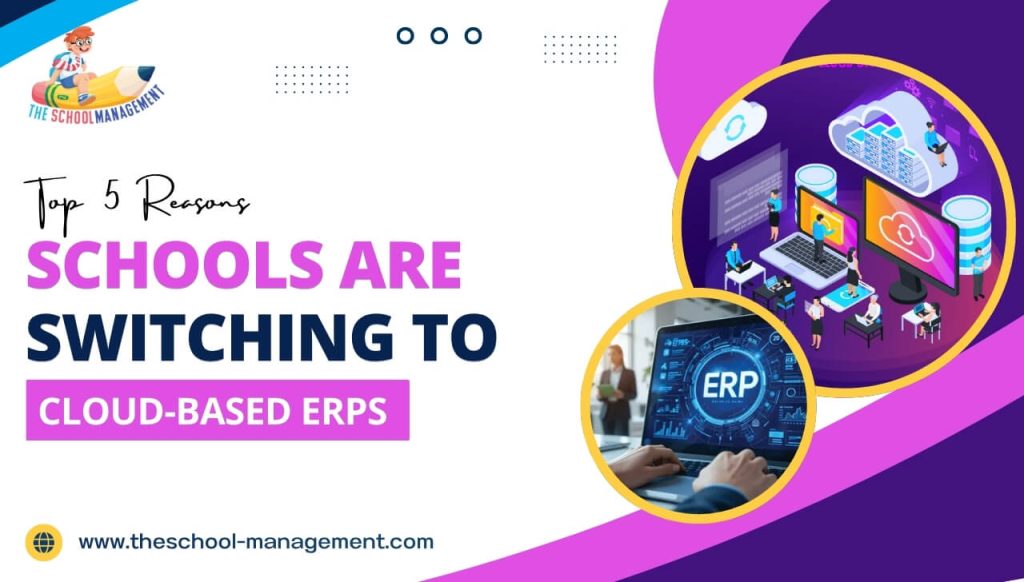These days the educational institutions are under a lot of pressure to deliver seamless learning experiences while managing the day-to-day operations efficiently. Due to the high maintenance costs, limited accessibility, and outdated features the traditional and complicated software systems often fall short. That makes more and more schools to adopt the cloud-based ERP (Enterprise Resource Planning) systems to streamline their academic and administrative workflows.
Here are the top 5 reasons schools are making the switch to cloud-based ERPs:
1. Anywhere, Anytime Access
Cloud-based ERPs give schools the flexibility to access data and resources from any device with an internet connection. Whether it’s teachers updating grades, parents checking attendance, or administrators managing admissions, everyone can log in securely from anywhere. This feature became particularly valuable during the rise of online and hybrid learning models.
2. Cost-Effective and Scalable
Unlike traditional ERP systems that require heavy upfront investment in hardware and IT infrastructure, cloud solutions operate on a subscription model. Schools pay only for what they use, making it cost-efficient. Plus, cloud-based ERPs scale easily as institutions grow—whether by adding new students, staff, or campuses.
Check out more : Features of School Management Software
3. Enhanced Security and Data Backup
Student records, exam results, and financial data are sensitive. Cloud providers ensure robust data encryption, multi-factor authentication, and automated backups to safeguard critical information. This eliminates the risks of data loss due to hardware failures or accidental deletions.
4. Seamless Integration and Automation
Cloud ERP platforms can integrate with various school management tools like learning management systems (LMS), online payment gateways, and communication apps. They also automate repetitive tasks—such as fee collection, timetable scheduling, and report generation—saving staff time and reducing human errors.
5. Improved Collaboration and Transparency
With centralized data, cloud ERP systems foster better collaboration among teachers, students, and parents. Real-time updates on attendance, assignments, and exam results ensure transparency and build trust. Parents can stay engaged in their child’s education, while administrators can track performance metrics with ease.
Also Read : What does the School Management System Include?
Final Thoughts
The shift toward cloud-based ERPs in schools isn’t just a tech trend—it’s a necessity for modern education management. By offering accessibility, cost savings, security, automation, and improved collaboration, these systems empower institutions to focus more on delivering quality education instead of juggling administrative complexities.
If your school hasn’t made the switch yet, now is the right time to explore a cloud ERP solution that fits your needs.

Leave a Comment